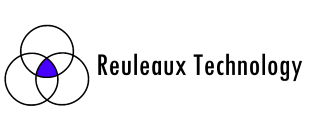A sensors perspective on Wearables
The launch of the Apple Watch and recent Fitbit IPO has intensified the evaluation of wearables as an ongoing part of the Internet of Things and many are saying the honeymoon is over. But most of the disparaging comments and reviews I have heard or read take the wrong perspective. I might agree the shine (pardon the pun) has worn off Fitbit and other activity trackers if I viewed them as standalone applications, e.g. counting steps and reporting sleep, but those are just early applications of the sensing capabilities of these devices. Saying wearables have run their course would have been like saying Eugene Bourdon’s pressure tubes had no more use after they were first used on steam engines.
First and foremost wearables are sensors. They sense a very specific subject: we humans. Wearables connect us to the digital world. As such they can be a part of a myriad of applications, many of which the product inventors may have never considered. The nature of sensor development is different from end product development. A sensor developer’s goal is to create a product that allows an ecosystem of other developers to quantify a variable that is important to whichever application they hope to address.
So let’s start with the fundamentals. Both philosophers and physicists have long held that the properties of the world come in two basic types: extrinsic and intrinsic. Philosophers ponder the sustainable nature of things, the intrinsic value, against the value those things take from external factors, extrinsic value. Similarly, physicists and engineers measure extrinsic variables like mass, volume, and surface that they can scale in a product or batch manufacturing system versus intrinsic properties measurements like pressure, temperature, and density that drive continuous flow processes. In both disciplines extrinsic variables tend to be more controllable and easier to change quickly while intrinsic variables are an inherent characteristic of the subject.
If we take this line of thinking to wearables we find that they too measure two types of properties: physical and physiological. Physical sensors, like Fitbit, measure us by measuring our physical movement and physical behavior -- the number steps we take, the way we sleep, the intensity of our activity over time. Consumers understand this because their primary motivation for buying wearables like Fitbit is to help them change their lifestyle behaviors. Physiologic sensors, on the other hand, measure characteristics of our body and its functions -- heart rate, blood sugar, blood pressure, protein in our urine, etc. Physical activities, like the extrinsic variables in the physics world, can be scaled and controlled over time by the user. Physiological characteristics, blood oxygenation, body fat, metabolization of alcohol, etc., tend to be inherent to our makeup via personality and genetics and are changed only over longer investments of time.
Why is this important? One word: causality. Causality is the effect a variable has on outcome or state of a system. Understanding causality means you can model, predict, and control the system. If we understand the behavior or characteristic of ourselves that we want to control or change, we can measure the right property and take the right action to effect change. Physical sensing wearables measure our activity and thus inform an understanding of our behavior. If we need to change our behavior to reach a desired result, i.e. better health, physical sensors help us measure our adherence and progress in that endeavor. Physiological sensors, on the other hand, measure the present state of our bodily functions. They too can be a goal and measure progress, but they rarely inform action toward the objective.
I am a Type 1 diabetic. I measure myself constantly. I measure my physical activity with a Fitbit. I have goals for both the amount and intensity of physical activity and my Fitbit measures that for me. My glucometer tells me the physiological result, blood sugar, of my physical activity combined with the food I eat and insulin I inject at a point in time. My doctor measures my A1C, blood cholesterol and protein in my urine every few months. These physiological tests measure the effectiveness of my self-management on protecting important bodily functions from my disease. Fitbit was not designed to treat diabetes, but because we understand the role of physical activity in controlling diabetes I can use it as a sensor to help me control my disease.
Consumers may take off their activity trackers after a few months and not everyone wants a smartphone attached to their wrist. But this is not a measure of the value of wearables as a technology. We are just beginning to investigate and understand how these new devices can be applied in all aspects of our lives and there is good reason for excitement. Consider the words of one famous technologist before passing judgement of the future of wearables:
The products of modern science are not in themselves good or bad; it is the way they are used that determines their value.― David Sarnoff.”
